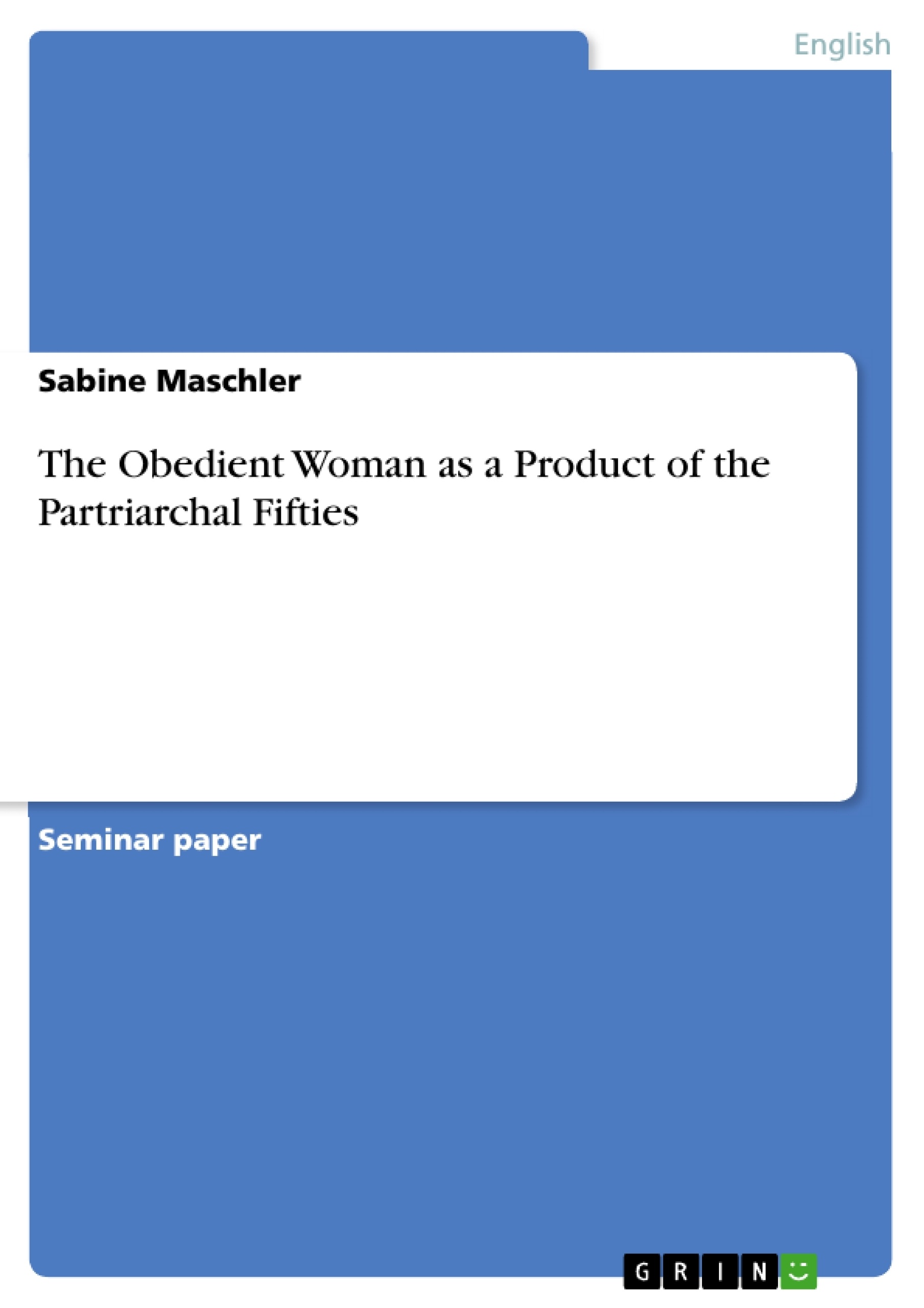"Woman ist not born, but made." - Simone de Beauvoir
This paper attempts to present a view of American women in the 1950s. During that time, women were primarily seen as bearers of children and as housekeepers and homemakers. The discrimination against women was at height in the 1950’s when women were told to put home and family first because the family was the core of a free society. This message was carried on to the women of that time through the media and the attitudes of the patriarchal society.
The main thesis of the paper states that women in the 1950s were constructed by men according to their wishes and perceptions. They were undermined according to the values of the Fifties and one of the most important value of that time was the family unit.
Inhaltsverzeichnis (Table of Contents)
- 1. INTRODUCTION
- 2. AMERICA IN THE 1950'S
- 3. CONSTRUCTION OF THE PERFECT FEMALE
- 3.1. Women enslaved through fashion
- 3.2. Undermining through language
- 3.3. Women as sex objects in a sexless time
- 3.4. Oppression through psychiatrists
- 3.5. Modern Women: The Lost Sex
- 3.6. I Love Lucy (...but only when she does the dishes)
- 4. HOW WOMEN MANAGED TO SURVIVE
- 4.1. Productivity in the community
- 4.2. Protestors against the misogynist fifties
- 4.3. Betty Friedan
- 4.4. The League of Women Voters
- 4.5. The Ladies' Home Journal
- 5. CONCLUSION
Zielsetzung und Themenschwerpunkte (Objectives and Key Themes)
This paper aims to explore the portrayal of American women in the 1950s, highlighting their construction as subservient figures within a patriarchal society. The paper analyzes the societal pressures and expectations imposed upon women, examining how these forces shaped their lives and opportunities.
- The construction of the "perfect female" in the 1950s
- The role of media and societal attitudes in shaping women's roles
- The impact of patriarchal structures on women's lives and opportunities
- The rise of female resistance and challenges to the status quo
- The enduring legacy of the 1950s for women's rights and equality
Zusammenfassung der Kapitel (Chapter Summaries)
- Chapter 1: Introduction: The chapter introduces the concept of women being "made" rather than born and establishes the central thesis that women in the 1950s were shaped by societal expectations and patriarchal structures. It highlights the limitations imposed on women, reducing them to domestic roles and reinforcing the dominance of men.
- Chapter 2: America in the 1950s: This chapter provides an overview of the social and political climate of the 1950s, emphasizing the pervasive fear, conformity, and cultural shifts that characterized the era. It explores the influence of the post-war period, the rise of consumer culture, and the changing expectations surrounding gender roles, highlighting the tension between progress and societal limitations.
- Chapter 3: Construction of the Perfect Female: This chapter delves into the various mechanisms that shaped the ideal image of women in the 1950s. It examines how fashion, language, media representations, and psychiatric practices reinforced the submissive and domestic roles assigned to women. The chapter also explores the concept of women as sex objects in a supposedly sexless time.
- Chapter 4: How Women Managed to Survive: This chapter shifts focus to the ways women navigated the restrictions imposed upon them. It explores various forms of resistance, including women's participation in community activities, the emergence of feminist voices, and the role of influential figures like Betty Friedan and organizations like the League of Women Voters.
Schlüsselwörter (Keywords)
The paper explores the themes of patriarchal society, gender roles, and the construction of femininity in the 1950s. It delves into the influence of media, fashion, language, and psychiatric practices in shaping women's experiences and limiting their opportunities. The paper also examines the emergence of female resistance, highlighting the efforts of women to challenge societal expectations and achieve greater equality.
- Citar trabajo
- Mag. Sabine Maschler (Autor), 2002, The Obedient Woman as a Product of the Partriarchal Fifties, Múnich, GRIN Verlag, https://www.grin.com/document/79215



